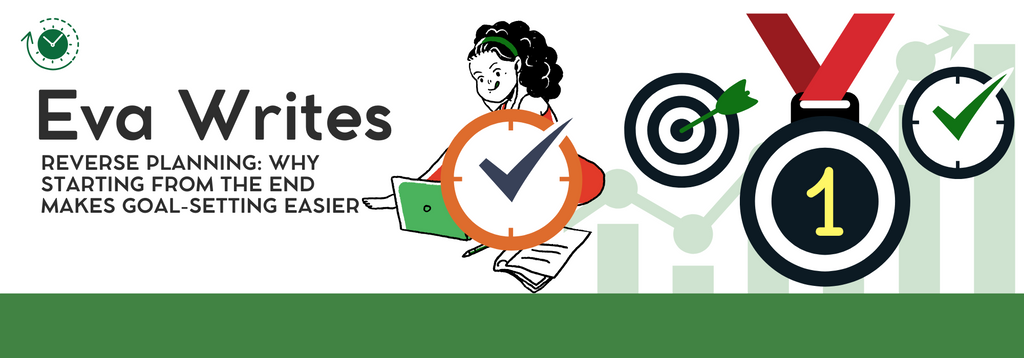Reverse Planning: Why Starting from the End Makes Goal-Setting Easier

Reverse Planning: Why Starting from the End Makes Goal-Setting Easier
The Power of Reverse Planning
When setting goals, most people start from the beginning, laying out steps in a linear fashion. However, reverse planning—starting with the end goal in mind—can be a more effective strategy. By identifying the final outcome first, you can break down the process into clear, actionable steps that make success more attainable. This method not only clarifies your vision but also helps you anticipate obstacles, making it easier to stay on track.
How Reverse Planning Works
Reverse planning involves working backward from your desired result. Instead of thinking, "What do I need to do first?" ask yourself, "If I already achieved my goal, what was the last step I took?" Then, continue identifying the preceding steps until you reach the present moment. This approach eliminates unnecessary actions and ensures that each step is directly aligned with your goal.
Benefits of Reverse Planning
-
Increased Clarity: Knowing your endpoint allows you to create a structured roadmap to get there.
-
Better Time Management: Reverse planning prevents wasted effort by focusing only on essential tasks.
-
Reduces Overwhelm: Breaking a large goal into smaller, well-defined steps makes it feel more achievable.
-
Improved Motivation: When you see a clear path to success, staying committed becomes easier.
-
Anticipates Challenges: Identifying obstacles before they arise allows for proactive problem-solving.
Applying Reverse Planning to Personal and Professional Goals
Reverse planning is beneficial in various aspects of life, from career advancement to personal development. If you aim to launch a business, for example, you would define your desired outcome—such as reaching a specific revenue goal—then identify the milestones leading up to it. Similarly, if you want to build a daily habit, like journaling, you would first envision the habit fully established and determine the steps needed to integrate it into your routine.
Reverse Planning and Productivity Tools
Using tools like spreadsheets can make reverse planning even more effective. A well-structured habit tracker (The Ultimate Printable Habit Tracker) can help break long-term goals into daily actions. Similarly, a budget planner (Family Budget Planner Spreadsheet) ensures financial goals are met by mapping out necessary steps in reverse. Visualizing your progress with these tools enhances accountability and boosts motivation.
Steps to Implement Reverse Planning
-
Define Your Goal – Be specific about what you want to achieve.
-
Identify the Final Step – Determine the last action required to reach your goal.
-
Work Backwards – List each step in reverse order until you reach the present moment.
-
Set Milestones – Break the process into smaller, time-bound objectives.
-
Track Progress – Use planners, spreadsheets, or habit trackers to stay on course.
Overcoming Challenges in Reverse Planning
While reverse planning is highly effective, some people struggle with defining the right steps. If you find yourself stuck, seek guidance from mentors, research similar success stories, or use productivity templates to simplify the process. By staying flexible and making adjustments along the way, you can refine your strategy and improve your chances of success.
Final Thoughts
Reverse planning is a powerful approach that transforms the way you set and achieve goals. By visualizing the end result first, you can create a more efficient, structured, and achievable plan. Whether you're striving for personal growth, financial success, or career advancement, this method provides a clear path forward. Pairing reverse planning with effective tracking tools (Mood Tracker - FREE) can further enhance productivity and ensure you stay motivated. Start applying reverse planning today and see how it simplifies goal-setting and achievement.
-
Posted in
#Focus, #Growth, #Habits, #Motivation, #Success







